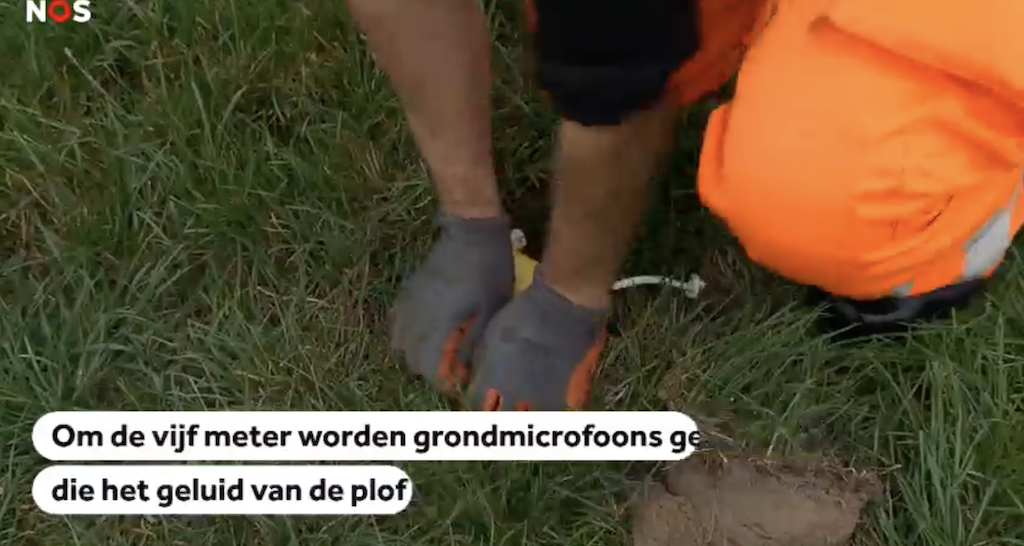Geothermal possibilities mapped in Central Netherlands with help of small explosives
A current study is conducted by EBN that explores possibilities for geothermal energy utilisation in the Central Netherlands with the use of small explosives.
Currently the earth’s soil is mapped over a distance of 1500 kilometers in the Central Netherlandes. Energiebeheer Nederland (EBN) is carrying out this study on behalf of the Ministry of Economic Affairs and Climate, to see if there are possibilities for extracting geothermal heat. Experts have calculated that geothermal heat, also known as geothermal energy, could supply 20 percent of household heat demand in the near future.
While five men from the Rossingh Geophysics company place bright yellow sensors in the meadows of Berlicum near Den Bosch, two colleagues drill a 20-meter-deep hole in the ground. They do this with the help of a mobile drilling rig hanging behind a tractor. A small charge of explosive is placed in the hole, which is later exploded.
A short video can be seen here.
This is seismic research that is also referred to as shooting seismic. The vibrations caused by the small explosions in the soil are absorbed by sensors. It forms a kind of echo photo of the earth’s surface that maps the different layers.
Energiebeheer Nederland carries out this research on a broad line that runs globally from Haarlem to Nijmegen. These are areas where oil and gas have not or hardly been searched for in the past, so that they are ‘white spots’ on the geological map of the Netherlands.
Sensors are placed to measure vibrations in the earth NOS
The results of the research should give municipalities and companies an indication of whether it is worthwhile to further investigate geothermal heat as an alternative to natural gas and to put it into practice. Municipalities will soon have to work with energy companies and residents to see which neighborhoods can ‘get off the gas’ when.
In general, only very well-insulated (new-build) houses can be fully heated using electricity. For many old houses, this degree of insulation is priceless and so alternatives are needed to say goodbye to natural gas. In some cases, districts can be connected to residual heat from the industry.
Where that is not possible, geothermal energy may therefore be an alternative. EBN believes it will take another two years to complete the investigation, so not all municipalities will know where they stand next year.
When extracting geothermal heat, natural hot springs are drilled for miles deep in the soil. That water is brought up and used via a pipe network to heat houses and businesses. The cooled water is put back into the water reservoir through another hole. Thus, unlike in gas extraction, the composition of the soil would remain unchanged.
Geothermal energy is therefore considered ‘relatively’ harmless. The chance of earthquakes, such as gas extraction in Groningen, is unlikely. Nevertheless, accidents such as groundwater pollution are not completely excluded. For this reason, the State Mine Supervision has stopped two geothermal projects in Groningen and Limburg last year.
Source: NOS


















